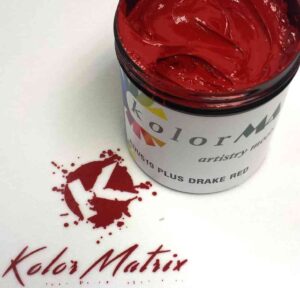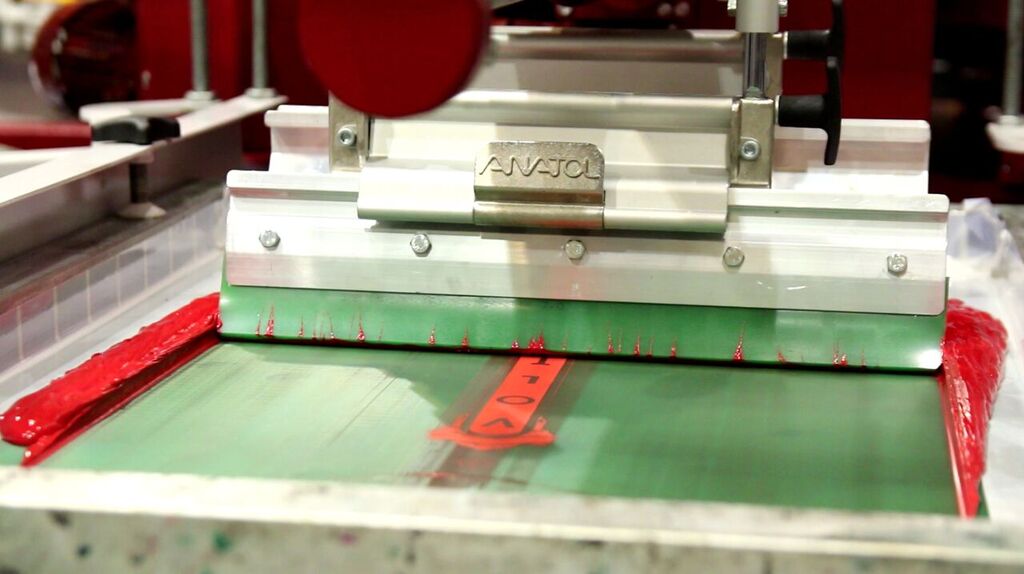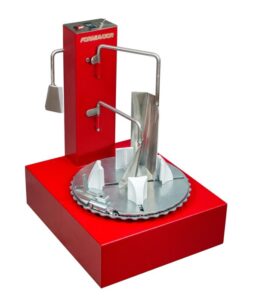

Revolucionando la industria de la serigrafía a través de tecnología de punta y servicio de calidad
Anatol Equipment Manufacturing Co.
1429 S Shields Dr
Waukegan, IL 60085


Revolucionando la industria de la serigrafía a través de tecnología de punta y servicio de calidad
Anatol Equipment Manufacturing Co.
1429 S Shields Dr
Waukegan, IL 60085

There are two main types of ink used in the screen printing world: water based ink and plastisol. Both inks have their own places in the industry, and knowing how they differ can help you meet a customer’s expectations.
Plastisol ink is a mixture of plasticizer fluid and polyvinyl chloride (PVC) resin. You may know it as «plastic based ink» – whatever you call it, there’s no denying its very thick consistency. When properly applied, plastisol ink sits on top of the fabric rather than dying the fabric itself. This produces a print that is slightly rougher to the touch (known as a «rough hand«) as well as strong opacity, which is why many screen printers use plastisol with dark colored garments.

Plastisol is the tried-and-true screen printing ink. It allows vibrant prints on dark fabric and is commonly used on heavy garments like sweatshirts. Most prints made with plastisol have a shiny appearance, and the print is thicker than water based prints, a desirable quality when printing garments like jerseys. Unlike water based ink, plastisol will not dry in the screen if left unattended, which makes it easier to work with and less of a hassle to reclaim. Plastisol also cures faster than water based ink because plastisol has no solvent requiring time-consuming evaporation. Depending on your location, it can be easier to dispose of plastisol than water based ink.
As popular as plastisol is, it still has some undesirable qualities. The thick, rubbery feel of plastisol prints doesn’t allow the garment to breathe as well as water based prints, something to consider if your customer is seeking a more natural feel. Plastisol doesn’t set unless cured with heat, around 320°F, for a certain amount of time, meaning the ink will remain wet until the heat bonds the PVC resin and plasticizer fluid. It can also be harder to print on soft cotton goods. The plastisol can sink through the top of the garment and settle, allowing small fibers to poke through the prints, which is known as fibrillation. Plastisol doesn’t stretch as well as water based ink, so the prints may crack after multiple washes.
Water based ink is a common solution created with dyes and, you guessed it, water. These inks have a thinner, runny consistency that will easily pour out of the container. A proper application of this mixture will produce a more transparent, quality print that is soft to the touch. Water based inks dye the fabric being printed, creating a «vintage» look and feel. Water based inks are recommended for light to medium colored garments.
As with any type of ink, there are positives and negatives to water based printing.
One reason why screen printers are attracted to water based ink is the soft feel that is produced when applied. Water based ink soaks into the fabric of the garment, then the water in the ink evaporates during the curing process, creating an end result that you can’t feel when running your hand over the print. The transparency of the ink produces a clean print that doesn’t mess with the integrity of the fabric, which makes it a popular choice among printers of fashion wear. Another benefit of water based ink is that some can be air-dried if you have the time to do so.
Some veteran printers claim rookies shouldn’t work with water based ink until they’ve mastered plastisol. While this isn’t entirely true, water based ink can be more labor intensive. Due to the properties of this type of ink, it will dry in a matter of minutes if you’re not actively printing, clogging the mesh in the screen. The water in the ink can affect a stencil if it’s underexposed, although this can be avoided by applying waterproof emulsion to your screen. The curing process for water based ink also takes longer than plastisol because the water must leave the print before any further curing can take place.
There are many different types of water based ink and many different types of plastisol. Make sure to research different varieties to find a specific ink that fits your need and budget.

Well there’s good news. Many ink manufacturers offer a variety of additives to blend into your ink of choice in order to get the right mixture for your job. The phrase «a little goes a long way» rings a bell when it comes to these products; agents such as low cure additives, stretch additives, reducers and thickeners are options that can improve the quality of your print when used in moderation. Sometimes the perfect ink for the job can’t be found straight out of the container – you’ll have to do some mixing. When you need to add a modifier or create a custom color, an ink mixer is an important tool to have around the shop.

Anatol’s Formulator ink mixers will help you prepare the right screen printing ink for every job. Contact us today and we’ll help you find the tools you need to help tackle your toughest printing challenges.
Your message was successfully sent!